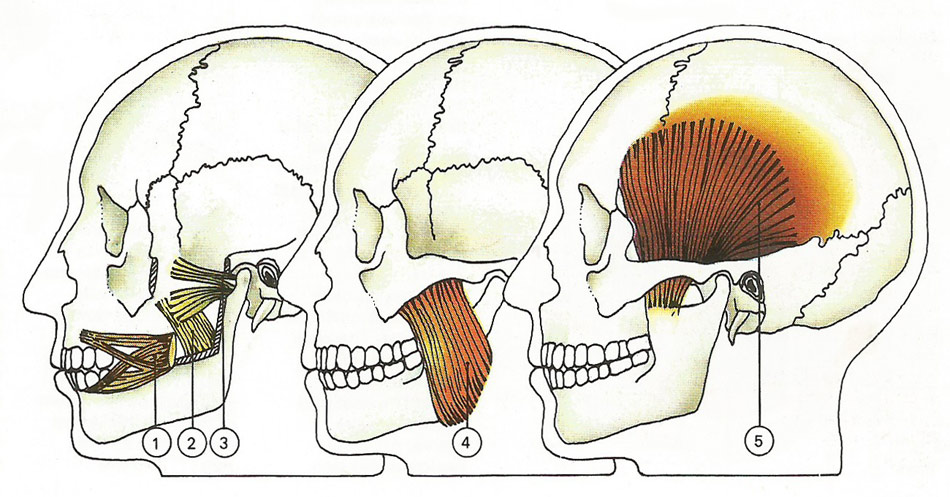chewing and biting

Chewing and biting represents the first stage of digestion. Although to us these actions seem routine to us they nonetheless require an intricate collaboration of skeletal muscles. On each side of the head are five powerful muscles that are chiefly involved in the business of mastication. The buccinator (1) forms the side walls of the mouth. By compressing the cheek, it modifies the position of the food in the mouth. The medial pterygoid (2), which lies horizontally across the side of the face, contracts to life the jaw. It also produces sideways grinding movements by pulling the lower jaw to one side. The external pterygoid (3), almost at right angles to medial pterygoid, contracts to protrude the lower jaw and open the mouth. The massenter (4) lifts or close the jaw by contraction. The temporalis (5), at the side of the head, performs the same function as it contracts.


